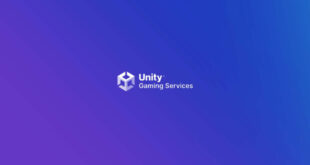The formative years of the UK’s game development industry – and, indeed, the global games market as a whole – are littered with enterprises started by people in their bedrooms, basements or garages. Jagex, Rebellion, Blitz; big contemporary companies started not specifically to become gigantic studios, but to make a modest living from doing what their founders loved: developing games that they, and hopefully others, would enjoy playing.
The game technology market, however, is not quite so innocent. Look at the companies making waves in the space, big or small, and you’ll see that for most their roots lie not in such humble abodes, but in university research laboratories or existing studios. Call us cynical, but the incendiary spark lighting the touch paper at these firms appears not one of creativity or a desire to do what you love, but of realising you have something of value on your hands.
Perhaps it’s unfair to compare a largely creative endeavour with one mostly concerned with engineering; a whole creative vision with something designed to underpin said vision. Motivation aside, the lack of home-grown game technology is palpable.
MEN UNITED
Unity Technologies, however, is a little bit different – but then, that’s exactly what’s made the company so popular. Its engine, Unity, has grown from an obscure Mac-only game engine to a multi-platform system firmly placed on the cutting edge of online, casual and increasingly console gaming.
While the W3 Consortium and Google rush around trying to standardise in-browser 3D, Unity has – for several years now – been offering native performance and hardware acceleration in a small plug-in that’s already installed on almost 20 million machines. While middleware companies have been slowly waking up to the iPhone market, Unity had a fully featured version of its engine available less than a few months after the App Store’s launch. Unity for iPhone has, at the most recent count, powered over 325 titles, including Zombieville USA, one of the platform’s major successes.
So what is it that has made Unity so different? It could perhaps lie in the genesis of Unity: that prototypical back bedroom or, in this case, a basement in Denmark.
But we’re getting ahead of ourselves a little. Ask the gentlemen behind Unity where the story begins and you’ll get a number of answers, but the real first step happened at 1:47am on May 21st, 2002. In Denmark, a programmer by the name of Nicholas Francis – now CCO – posted a message to the Mac OpenGL mailing list asking for advice on a shader programming system he wanted to integrate into his game engine. Several hours later and few hundred miles away in Germany, Joachim Ante – then in his very early twenties, but now chief technology officer – replied to that post, kicking off a conversation that would result in the two deciding to collaborate on a general-purpose shader system that would work on their individual engines.
Left to right: Nicholas Francis, CCO; Joachim Ante, CTO; David Helgason, CEO
“After a while, we decided to scrap our individual engines and make an engine together, because it’s more fun when there’s two of you working on something,” reminisces Francis when we catch up with him in San Francisco, where the company is now headquartered, during its Unite conference. “And then shortly afterwards David joined.”
CEO David Helgason, the third and final piece of the puzzle, was also based in Denmark. “You and Joachim decided to merge your engines with the idea that you’d get twice as much engine at the same cost, which was incredibly naive,” laughs Helgason.
“This engine now had to be super-flexible and able to tackle different types of games, making it much more complex to create. But it seemed like a good idea at the time, and I thought you guys were really onto something, so I jumped on board as the third developer.”
EDGE DETECTION
In truth, though, the three of them weren’t building an engine for the sake of it: they aspired to be game developers, and saw the technology as the first barrier for them to overcome. In fact, although the engine became known as Unity quite early on, the company was known as OTEE – Over the Edge Entertainment – until 2007.
“We always had very big ideas,” says Francis. “We were very focused on the fact that we were going to make a game and then licence out the technology – we felt that the game was necessary to prove the tech. But, to be honest, we kept on slipping past our
self-imposed deadlines.”
Helgason interjects: “In the end, we did what engineers tend to do: rather than following our goal of making games, we ended up making a tool to make games. It’s a classic mistake. It happens all the time, but once in a while it’s actually a good thing and something great comes out of it.”
Development of Unity really picked up the pace, however, when Ante moved from Germany to join Francis and Helgason in Copenhagen. Ante and Francis rented a flat together, and it was in the basement that the three of them created Unity.
“I actually lived just around the corner,” Helgason laughs, “but I was very rarely there. There was pretty much always two of us working on Unity and the other one would be sleeping, round the clock. I couldn’t afford to live without any income at that time, so I also had a job in a local cafe, which worked out really well because I could bring back food for the others.”
The Unity team in 2005
BEST MADE PLANS
It’s the sort of schedule that anyone who’s thrown themselves into a home-grown project will relate to and, as Francis and Helgason reminisce, it’s clear that they were good days. It was also at this time that the business plan for Unity began to emerge, although it came from typically rough beginnings.
“I think that, right at the beginning, we decided that we would take turns at being CEO, but we quickly worked out that would never work,” says Francis. “At one point we even put an advert out there: ‘Have great tech, need CEO’. We got some guys from the Copenhagen business school apply for it, but they all ran away pretty quickly.”
And so, being the outgoing one, the role fell on Helgason’s shoulders. “The thing is, as we learnt about the industry and what we had to do, all the people we found who could run the business for us were slightly behind the curve compared to us – even though we weren’t all that far ahead,” he explains.
“But we learnt the ropes and figured out what we were doing, and it took a long time to do so. I think it’s sometimes good to come at it with a fresh mind. Programmers have very analytical mindsets, so I think we can kind of figure it out.”
“It’s really just common sense a lot of the time,” adds Francis. “But we also had this kind of ‘intellectual darwinism’ going on at the company – we’d just debate things until we all agreed.”
Helgason mentioned in OTEE’s first business plan a British developer as its model for future growth. That company was Criterion, then still independent and tearing up the PS2-era middleware market. In an interesting twist of fate, several years later, Criterion’s then-CEO David Lau Kee would join Unity as non-executive chairman.
“In those early days, we looked uphill and we saw Criterion. Their model, along with the other giants of the time like Unreal and id, was not just about having the technology, but also about having really good sales guys and having multiple big products already using your technology. Otherwise nobody would feel confident enough to buy it.
“So it looked like this very complex, very expensive uphill battle. But also we realised that, while triple-A gaming wasn’t going to go away, it was only growing at a slow rate – it wasn’t stagnant, but it was like a few per cent per year. What was going to grow was casual gaming and online gaming. I mean, this was before the concept of a casual MMO, but it felt like things were going to go in that direction.”
And so the team decided to target this market, but be as professional as possible: provide proper support for developers, smooth out all the rough edges, and to ship with comprehensive documentation. Helgason retrospectively calls this ‘the biggest bet in the company’s history’, but admits that at the time it didn’t feel like one. “It turns out that we made really good decisions at the start, because we’ve not really changed things since: we’ve tweaked it a little, but that’s it.”
But it’s not just in business that the early decisions proved fruitful: almost everything that Unity is now praised for – its innovative approach to workflow and hot-updating raw assets, the intuitive editor – was in there right at the beginning.
Helgason puts some of that down to their Mac background: “We came from a Mac side so I guess we were encoded with that philosophy of that polish, that simplicity, that clarity that Apple’s software has. That was with us from the beginning. And then, quite early on, we figured out those key concepts of workflow.
“That’s the real innovation behind Unity – I mean, the rest is really well done, but it’s the workflow was just super-innovative. Nobody had figured out this concept of swallowing in whole assets from any application, using them, and updating them when they’re saved. That was in super early, really early, and the product grew around the pipeline. It was in so early that we could import a multi-layer Photoshop file before we could even draw a mesh.”
CATCH AND RELEASE
In 2005, the first version of Unity was finished and released onto an unsuspecting market. But it wasn’t until a year after that, at version 1.5, that the team really admit that the product was actually all there; until then it couldn’t create Windows-compatible games, nor could it create games to be run in-browser.
With no marketing budget – Helgason says that they ‘probably would have fucked it up somehow’ if they’d allowed themselves one – the three of them worked on supporting those who did come on board to their utmost.
“We were developers developing for other developers,” says Francis. “We understood their problems and tried to fix them; we spoke to them. It’d be a case of not being able to sleep at night and thinking, ‘I wonder what’s going on on the forums.’ It was all hours of the day. I think they recognised that, and then those customers we had started evangelising it for us.”
Nevertheless, there were very few around in those days, admits Helgason. “Aside from a few indies and hobbyists – the smaller end of the market, those with less to lose – no-one was stupid enough to buy it. Because, of course, it took a while to prove to anybody that this would get supported, updated, and developed further by us.
“For all they knew, we could have followed the pattern: game company makes a game, game doesn’t do that well; so they try to sell the technology behind it until they get bored and move on. So we had to kind of prove to people that that wasn’t what was going on here. That actually took about two years.”
WORLD WIDE WANT
What did capture people’s attention was the web player: coming as the casual gaming scene exploded into popular consciousness, suddenly browsers were capable of going beyond Flash’s attractive-but-sluggish vectors and into hardware-accelerated 3D games. Do they feel like they kickstarted the 3D-in-browser revolution, something that’s now being ratified into proper internet standards?
“No, not really,” answers Helgason. “Virtools was already in the browser space, and Director too. So we weren’t the first, we were just way better. Director had gone stale – for 2001, when the 3D stuff released, it was quite good, but they didn’t follow technology and they never got the tools right – it was all driven from code. Virtools just never got their polish together; the plug-in was big and clunky. On paper they looked formidable; we were scared of them. But nobody really mentions them anymore.”
Part of the reason that both those technologies are now marginalised, while Unity flourishes, may be that aiming at games – and therefore at the top – has left the door open for other uses, Francis suggests.
“In the past few years people have realised you can take game engines and do all sorts of stuff with it, but it doesn’t work the other way. It’s completely natural for architects to do pre-vis in a game engine, or scientists to do data visualisation with a game engine, but you’d never make a game from a CAD program – and certainly not a browser-based MMO or something. So I think that, in that sense, it’s been really good for us to focus on games – it really makes you push the bar technology wise.”
And if your eyes are glazing over at the the thought of non-game applications and their overall relevance to the business at large, Helgason is ready with a surprising statistic: according to a recent audit of its customers, a third of them aren’t making games with Unity, with applications ranging from data visualisation to interactive art installations.
THE MACS FACTOR
But, in truth, there was something holding Unity back: the development tool was still only available for Macs, and although they were attracting customers, having to spend as much on hardware as a Pro licence was proving somewhat of a stumbling block.
“If you look from about early 2008 to spring 2009, so many of our customers were buying Macs. It was so clear that people were being convinced about the technology, but had to buy this really expensive ‘dongle’,” laughs Helgason. “They weren’t super thrilled. Some of the big studios that bought Unity were having problems because their IT departments were saying, ‘No, you can’t connect Macs to our network. It’s outside protocol.’ So there were several studios where they’d have a special router going out through the wall, but they couldn’t access company e-mail or anything.”
So it became clear to the team that they really needed to support the PC, but that meant rewriting the whole editor from scratch – something they refer to as the second big risk that they ran. “We tore it all the way down and built it back up again,” says Francis, who did much of the work himself. “But it had to be done, and the editor is definitely now much better for it.”
The Unity Technologies family today
FOR THE WIN
Unity launched the first version with Windows support, version 2.5, at GDC 2009. Since then, both the engine and the company have been firing on all cylinders. In autumn 2008, there were approximately 18 people working at Unity Technologies. By the time GDC 2009 came around, it was about 30. Now the company is almost 60 people across five offices, and still growing rapidly as it seeks to ramp up its support efforts and spread the tech to new platforms.
To go from three to 60 within five years is quite the growth spurt, and it’s fair to say that it’s caused some sleepless nights for the original founders.
“It’s been a real change,” admits Helgason. “I mean, middle-management – are you kidding me? HR coordinators? But actually you find out that, as you grow, you have to change things to keep things the same. If you want to have a free flow; if you want your developers to free to make cool stuff, you need some kind of infrastructure around it – but you don’t need that structure when you’re 16 or 19 people, like we were last year. So it’s been a big change, but at the same time doesn’t feel like it’s changed the company that much.”
One of the real efforts that the founders have made, explains Francis, is to keep what they call the ‘crazy nerdy culture’ that catalysed the whole thing while growing so as to accomplish more.
“One of the best things we’ve ever done was to instate Google Fridays. So, on Fridays, you can do whatever you want. Obviously, if we’re crunching then it’s all hands on deck, but for most of the time people are just working on this crazy stuff.
“As you grow you find that, if you have a good idea, there’s more and more reasons not to do it. So that’s why we do this. People are allowed to work on their own projects, even if we think they’re bad ideas. I think that’s really really important, because to see the reasons not to do something – and to do it anyway – can be a really important lesson. Google Fridays have been great for that. Even I really look forward to Fridays now, because that’s when I get to work on the fun stuff.”
It’s this attitude of fun stuff that has brought Unity to where it is today, both as a company and as an engine. When most middleware manufacturers were spending their efforts on bigger and better polygon counts, the three guys behind Unity were making something they wanted to make, and a web player that would enable everyone to play games anywhere with little effort. Maybe it’s fitting, in a sense, that Unity – the tech that many believe is on the precipice of revolutionalising the industry – is one with ‘fun’ underpinning every line of code.
www.unity3d.com

 MCV/DEVELOP News, events, research and jobs from the games industry
MCV/DEVELOP News, events, research and jobs from the games industry



